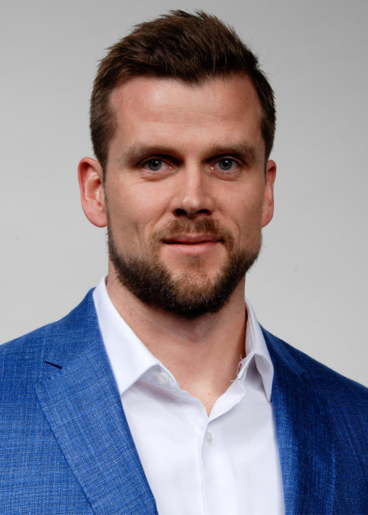Session Moderator: Yen-Lin Han, Seattle University
Presentations in this session were chosen from the peer-reviewed contributed papers. The papers will be published in the 2024 Proceedings of the Design of Medical Devices Conference in the ASME Digital Collection.
Presentations are added as they are confirmed.
On Lead Durability: Materials with Performance for Extreme Service Implantable Leads
In this work, lead subcomponent performance is examined with a drop-in nitinol-silver composite wire system expected to deliver 50% improved flexibility, shape memory capability, and 50% improved strain-fatigue durability for next generation, extreme mechanical service, implantable leads. Leads produced from this advanced conductor could be useful in a variety of applications including service life extension of cardiac pacing, defibrillation, and nerve stimulation and sensing.

Jeremy E. Schaffer
Fort Wayne
Jeremy leads a materials innovation group at Fort Wayne Metals driving fundamental research and new product development in medical device and aerospace markets. The group’s research portfolio includes future generation “moonshots”, as for example, orthopedic “vitamin” metals and “nitinol wool” and sustaining advances for current customers such as higher temperature nitinol ternaries for automotive actuators. Jeremy holds degrees in Mechanical Engineering, Materials Science, and Biomedical Engineering from Purdue University where he studied fatigue failure of pacing leads and human cell interactions with metals.
Evaluating the Effectiveness of a Novel Rapidly Appliable Multifunctional Pulse Oximeter in Neonatal Care
Monitoring vital signs in neonates, particularly in resuscitation and intensive care, is crucial for effective neonatal management. Accurate blood oxygen saturation and heart rate measurements are essential for guiding therapeutic interventions and optimizing outcomes. Traditional pulse oximetry devices often face challenges in application speed, ease of use, and the risk of skin injury, especially in preterm infants. This study introduces a newly designed pulse oximeter to enhance the efficiency and safety of neonatal monitoring in clinical settings. It is engineered for fast and convenient attachment without adhesive or abrasive fasteners, reducing skin injury risks. It is compatible with standard bedside monitors and can measure hemoglobin oxygen saturation, heart rate, electrocardiography, and temperature. This pilot observational study in the postpartum unit assesses the new pulse oximeter’s performance against conventional devices
Christopher Klunk
Christopher Klunk, M.D., M.S., is an assistant professor in the Department of Pediatrics at Dell Medical School and a board-certified neonatologist. He received a medical degree from the University of Massachusetts Medical School in Worcester and completed a residency in pediatrics at The Warren Alpert Medical School at Brown University in Providence. Klunk went on to complete a fellowship in neonatal-perinatal medicine at Yale School of Medicine in New Haven. He has a special interest in ventilator management and bioethics.
Iman Salafian
Iman is currently pursuing a Ph.D. degree in Mechanical Engineering with a focus on Biomechanics at the Walker Department of Mechanical Engineering, University of Texas at Austin, since August 2021. His research project is centered on developing vital sign monitoring medical devices for neonates.
Feasibility Testing of a Novel Suture and Scaffold Dressing Device as an Alternative to Gauze Pad Compression for Wound Dressings
The properties of a novel 3D-printed medical dressing accessory, designed to provide additional support for wound compression, are explored. Traditional wound dressings often require multiple layers of gauze or other absorbable dressings to provide sufficient pressure for blood coagulation and wound healing. This research investigates the magnitude of compressive force exerted by the novel device when applied to simulated skin and its durability as a substitute for soft fabric materials usually used to pack wound dressings. This is an early-stage study that investigates the feasibility of this device to provide better compression, contributing valuable insights into the mechanical characteristics of supportive wound care devices, and aiding in the development of more effective medical dressings.
Kordell Mitchell Tan, PE
Kordell is professional engineer and PhD student in biomedical engineering at the University of North Dakota, with several years of experience designing and developing medical devices. He is committed to solving problems related to human health and wellbeing and has research interests in the science of medical device development, human factors and usability engineering, and biosensor development. He currently works as a project manager at Axonics, Inc.
A Novel Approach to Thromboembolic Event Detection: An Initial Evaluation
Electrical impedance tomography utilizes the electrical conductivity of a material to generate non-ionizing continuous cross-sectional imaging between a group of electrodes placed equidistant from each other in a conductive solution. Here we explore the use of electrical impedance tomography for detection of thromboembolic events through integration with inferior vena cava filters. We constructed a proof of concept prototype with electrodes spaced around the periphery of a simulated vessel and created software to control AC injection patterns through the electrodes in order to generate cross-sectional maps of relative resistance across the vessel. This initial study focused on quantifying the sensitivity of the initial device by utilizing a low-conductivity material in a conductive fluid to represent a thromboembolus in blood. The prototype successfully created cross-sectional, two-dimensional electrical resistance maps that detected both the presence and the general location of low-conductivity test materials within a conductive fluid. These results demonstrate the potential to utilize intravascular electrical impedance tomography to detect thromboemboli caught within an intravascular filter.

Basil Alias
Texas A&M School of Engineering Medicine
Basil Alias is an M.D. and M.Eng candidate at Texas A&M University, School of Engineering Medicine (ENMED). With a background in biomedical engineering and experience in spinal instrument and implant development, has led him to learn about and innovate in medicine. In this endeavor, in partnership with the Houston Methodist Research Institute and with support from the Brown, Smith, and Raymond ENMED Capstone Program, he hopes to make a lasting impact on healthcare through innovation in surgery and medical visualization.
In the future, Basil plans to use his experience in engineering to bolster his medical expertise. He hopes to specialize in otolaryngology, to make an impact on those suffering from head and neck diseases and disorders. In his commitment to medicine, he has been able to develop, implement, and generate innovative devices and technologies, such as software for facial paralysis, instrumentation for facial reconstructive procedures, and more, that are used clinically, and he hopes to continue this trend throughout residency, and for the rest of his career in medicine.
The Micro-CT Scanning of Human Hearts with Previously Implanted Clinical Devices: Subsequent Generation of High Resolution Computational Models
The generation of high-resolution models of human hearts post-implantation is an important tool for improving device designs and one's understanding of clinical outcomes. A micro-computed tomography scanner was used to generate high-resolution, 3-dimensional scans of perfusion-fixed human hearts that contained previously implanted devices. Following scanning, the generation of high-resolution computational models allowed for the visualization of the device-tissue interfaces as well as the creation of various 3-D prints. For this project, we aimed to collect optimal scanning parameters (i.e. voltage, current, and frames per second) for each heart, which in turn could be used in future studies to guide more efficient and targeted imaging. The parameters were specific to and varied between hearts containing stents, pacemakers, implantable cardioverter defibrillators (ICD), and aortic valve replacements. This unique database should aid in the understanding of these device-tissue interactions by clinicians, students, and medical device designers.
Audrey Wethington
Audrey Wethington is currently pursuing a Master’s degree in Biological Sciences at the University of Minnesota. She plans to attend medical school upon graduation. Her research project centers around using micro-CT imaging to create computational models of hearts post-myocardial infarct and hearts with implanted devices.
Sophia Boman
Sophia Boman is obtaining her Bachelor of Science in Biology with a minor in Spanish at the University of Minnesota. Her research has focused on micro-CT scanning of hearts with implanted clinical devices and creating 3D models. She plans to attend medical school following graduation.